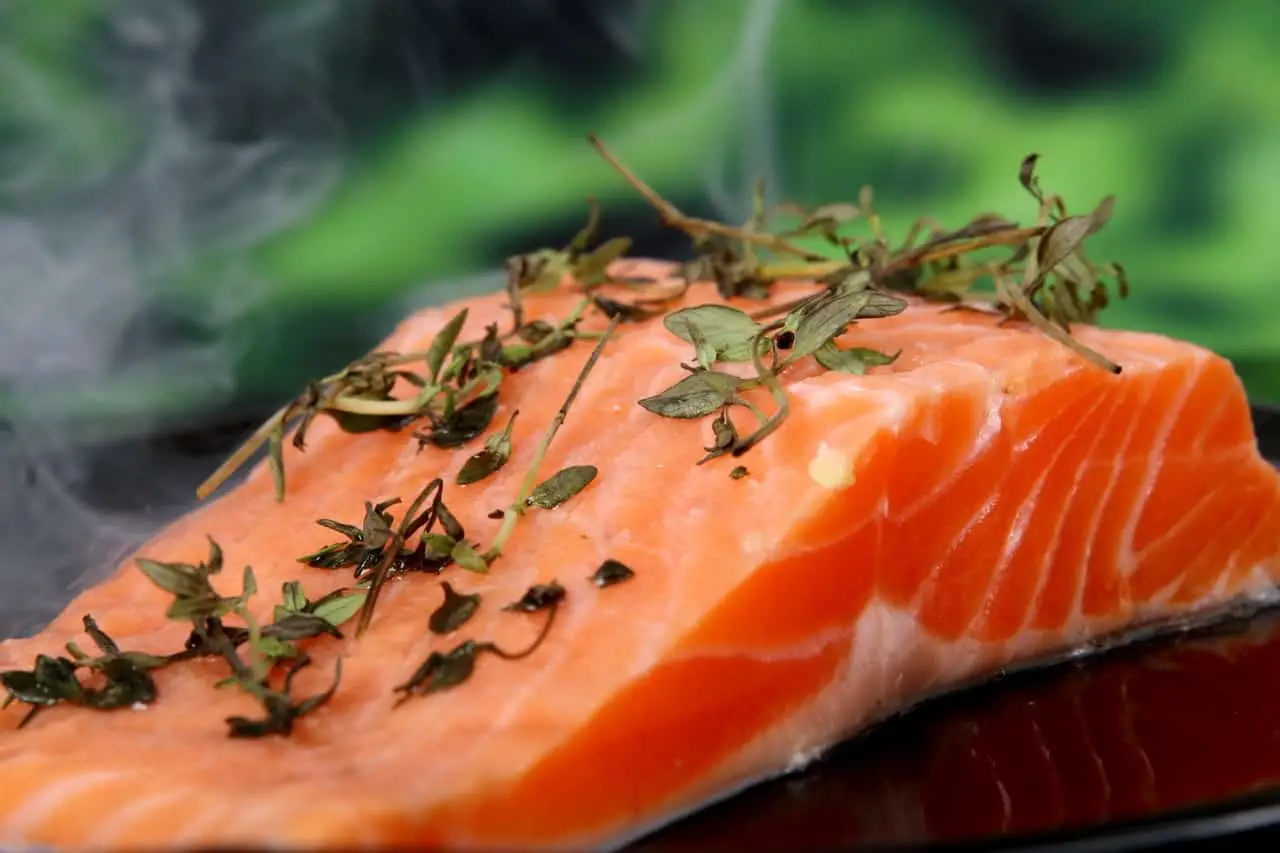Table of Contents
The pleasure of eating a fish fillet may be surpassed only by eating a fish fillet you have filleted yourself. There’s an art to creating a fillet. Handling the fish properly, gliding the knife along its length skillfully, developing a feel for this, and harvesting the most meat possible all go into this art form. Those who do it well seem to do it effortlessly, but it’s not like that in the beginning. Arriving at that level is achieved by at least a little training and more than a little practice. But it’s worth it if you love eating fish. The payoff lasts for the rest of your life. So, if you haven’t already gained this knowledge, we’re going to inform you how to fillet a fish.
*This post may contain affiliate links. As an Amazon Associate we earn from qualifying purchases.
What You’ll Need
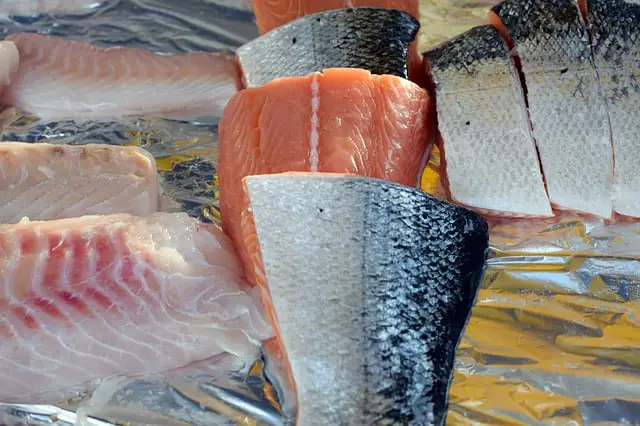
image via: pixabay
The tools for filleting fish are simple and easy to find. Basically, you need cutting tools. Sharp cutting tools. To be honest, there’s more if you want to be a pro about it. Ideally, you will use a fillet knife. Some are manual, some are electric. There are kits out there, and they might have two fillet knives, perhaps one 7-inch and one 9-inch.
It’s good to have a knife-sharpener also if you’re going to do a lot of fishing and hopefully a lot of fish processing. Corrosion-resistant blade coating should be in your kit to keep those knife blades in great shape. A cut-resistant glove is important to protect the hand that’s holding that slippery fish. You should consider having a pair of scissors on hand as well, as they are probably the most effective tool for cutting the fins off the fish.
One step some consider essential is removing the scales from the fish. Some people use a knife for this, but there are fish scalers that make the job easier and faster. Finally, in learning how to fillet a fish, you should make sure to bring a set of tweezers or a boning knife to pull out those thin bones that may remain after the fillets have been removed from the rib cage.
How to Fillet a Fish: Small
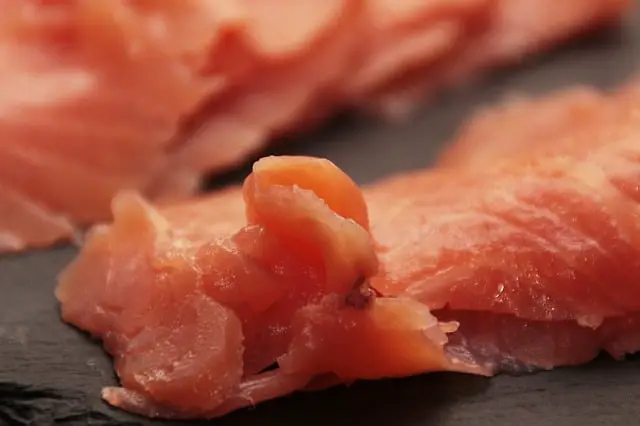
image via: pixabay
Smaller fish require a smaller knife. You could use a large knife, but the 7-inch may be your best bet. The electric knife is especially efficient with the smaller fish if you have a large mess of them to fillet.
To begin, lay the fish on a clean cutting board. Slice just behind the head, angling down to a point just behind the pectoral fin. To complete the removal of the head, flip the fish over and cut on that side from the same spot behind the head down to the location behind the pectoral fin.
It’s in the Details
When learning how to fillet a fish, technique is important. The small things can make a difference in the ease of the process once they are learned. For example, in this next step try using the tip of the fillet knife. Insert it in a position parallel to and alongside the spine on either side. Cut with just that tip of the knife straight toward the tail of the fish until you reach the back of the dorsal fin.
As you go, put pressure on the spine with the flat side of the knife to keep track of where you are. Once you reach the point behind the dorsal fin, know you have reached the end of the rib cage. You can then thrust the knife from the top position where you’ve been cutting to the bottom on the same side. The knife is now flat with the cutting edge facing the tail. Keeping the pressure against the spine, slice along the side all the way to the tail.
Next, flip the fish over and repeat the step of slicing along the spine, opposite side, again thrusting through to the bottom once behind the dorsal fin. Cut as you did on the first side, back to the tail. Using the center of the blade, make a sweeping, gentle cut from the top of one side from front to back. If you just cut smoothly, the knife will take the path of least resistance and not cut into the rib cage.
You guide the knife just outside the rib cage and work from front to back. At the same time, pull up with your gloved hand on the meat as you make your way down toward the bottom and tail with repeated strokes. When you reach the bottom of the fish, make the final cut to remove the fillet. Repeat this action on how to fillet a fish on the other side.
More than One Way to Skin a Fish
Separating the skin from the flesh is done by lying the filet on the cutting board with the skin side down. The glove comes in handy here, considering how slippery the filet is at this stage. Holding it in place with the glove, insert the knife between the skin and the flesh at the tail end. Applying downward pressure with the flat side of the blade and cut along the place where the skin and flesh meet until it is all separated.
As mentioned earlier, knowing how to fillet a fish—especially small ones—with an electric knife can come in very handy. It eliminates a few steps, making the process faster. After taking the head off, you can use the electric knife to cut straight back through the rib cage. Then cut the rib cage out directly, having it on the upside and cutting under it while using upward pressure against it. The other side is cut along the spine. The rib cage on that side is cut out the same way. Skinning the fillet is done as with the traditional knife, but the electric knife tends to do the job faster.
A Little Information on Processing Fish
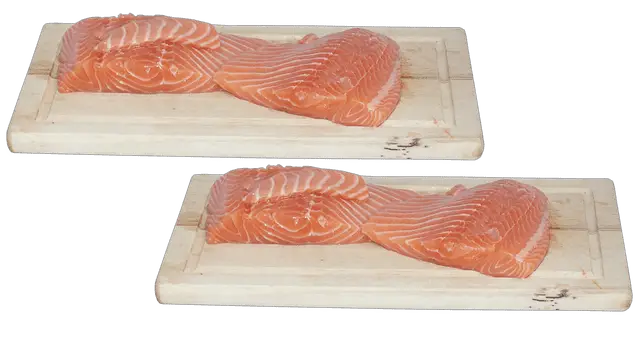
image via: pixabay
Before going over the details of how to fillet a large fish, we should discuss the fact that there are various methods of processing fish. One of the most important matters in processing is getting it ready to fillet. For instance, bleeding out a fish shortly after it dies helps keep the taste and texture of the fish at its best. This is done by opening it under the gills, pulling the head back until the spine snaps, then running a rope into the mouth and out the gills. This allows the blood to flow out completely, a vital step toward learning how to fillet a fish.
Scaling the fish is not an absolute necessity if you’re filleting it. As seen in the section here on small fish, the skin can be sliced cleanly off the flesh. With the skin goes the scales. Of course, you may prefer to eat the skin and don’t want to remove it. If you don’t like eating scales, then scaling would be a must. If you want to scale it, we suggest doing it before gutting as it may be firmer and less slippery.
To gut the fish, cut it along the bottom, starting at the tail and moving forward to the head. This is some unpleasant work with plenty of bacteria involved, so use some rubber or latex gloves. Pull out all the guts and dispose of them safely. Rinse the fish body thoroughly before proceeding. Cutting the fins off with a pair of scissors can be done before filleting, but the truth is that the fillets can be removed without cutting the fins at all.
How to Fillet a Fish: Large
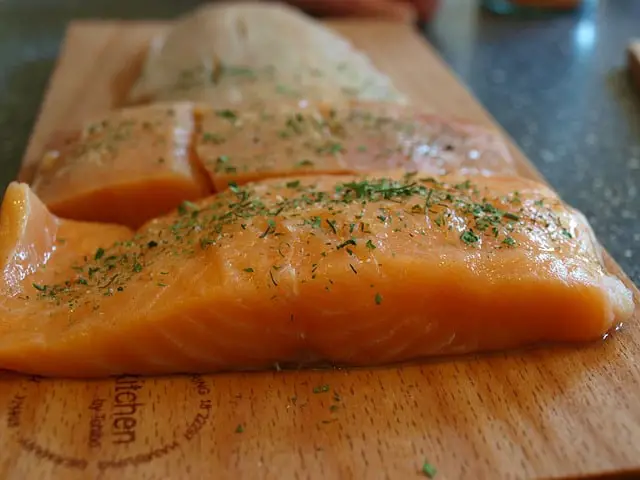
image via: pixabay
Using the larger knife for large fish is probably stating the obvious. You could apply the same process of how to fillet a fish to small fry or trophy winners, but another method may be a better alternative for you. The first step would be to cut from the top to the bottom, just behind the head and the gills.
This cut would go to only about half the thickness of the body, not all the way through. Then, cut with the tip of the knife alongside the spine from the back of the head to the tail. Next, cut the fillet from the bottom with the tip of the knife up to the dorsal level. Pull up the fillet as you continue to slice toward the tail. Staying above the rib cage results in obtaining a clean fillet. The final step would be to flip it over and repeat the process.
Conclusion
Learning how to fillet a fish can be an adventure in itself at first, but now you have some proven techniques to do it the right way. Any awkwardness or errors should not be a reason for discouragement. This is a process and, like any other skill, will improve each time you do it. Having the proper tools should help bring out your talent. Soon, you should be producing fillets that will make you proud. And be sure to use a cut-resistant glove for filleting. Stay safe and enjoy some of those fish you catch! © Incomestorage

